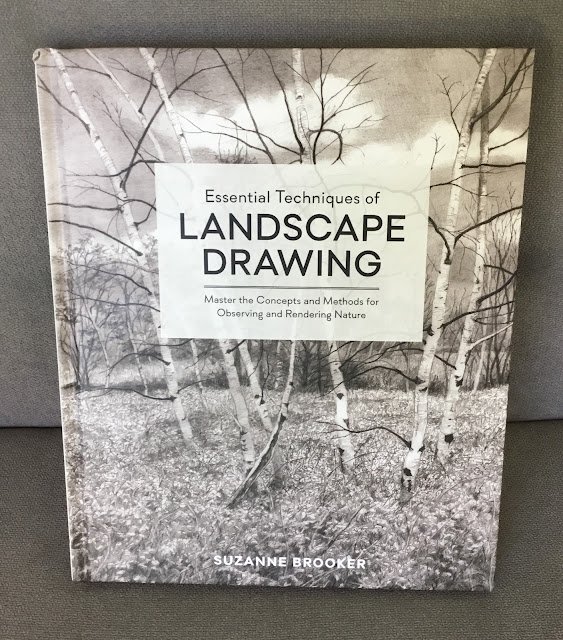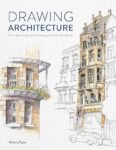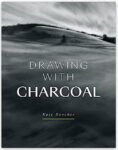It's been a busy day as I've been making notes on this book that I…

Essential Techniques Of Landscape Drawing, Suzanne Brooker – Book Review
So here’s the book I got for Fathers’ Day and have just spent three days reading. It’s a 196 page hardback book, with reassuringly thick, shiny pages and a smell that reminds me of a newly painted hospital. Just picking it up makes me feel accomplished. It’s like the Tom Hoffmann book in that respect.
It’s obviously about drawing and, in particular, about drawing landscapes. And (quick calc) 79% of it is about drawing in graphite pencils. Not just with one pencil but with a range of pencils of different hardnesses. But I still wanted this book because even that 79% includes lots of ideas that I’m smart enough to be able to translate into similar ideas with watercolour, oil pastels, coloured pencils, inktense pencils and even markers. Contents–wise, the book breaks down roughly into:
– 15 pages of introduction
– 20 pages of buildup
– 20 pages on light and shadows
– 25 pages on composition
– 85 pages on landscape elements
– 25 pages on other media – that’s the other 21%
Nothing much happens in the introduction, to be honest. It never does but these books would feel weird without someone talking while we settle down and make ourselves comfortable. The next chapter starts things moving with some stuff on materials and on all the different ways to hold a pencil before starting to define lots of different terminology that Suzanne will be using throughout the book. Almost every section in this last chunk of the chapter seemed to finish with “more of this on page x” which was fine by me.
And then the book gets started properly with a chapter on light and shadow. Most of this chapter is about how to draw cuboids, cylinders and spheres. How to shade them, where the highlights are, where the darkest shadows on their shadow sides are, etc. I found this to be exceptionally thought provoking and I’ve seen others praising this bit in reviews. It wasn’t anything new to me, but somehow reading about all this in a book on landscapes got me more focused than I was when reading other books, which only tend to illustrate ideas with tabletop still life photos. And Suzanne does keep emphasising all this stuff here in later chapters. This chapter also talks a bit about different shading patterns: long lines, short lines, cross cross, that sort of thing.
Then we’re into the fourth chapter, on composition. A lot of stuff in there that I’ve read about before, most notably in the Frank Webb book, but there’s always something new if you read these books carefully. For me, it was where Suzanne talked about how the best eye routes for a painting were zigzags paths made up of diagonals and how these could be created with undulations and grassy clumps in otherwise flat and boring foreground areas. There was also a geometrical construction to divide a page into nine equal rectangles (so the artist could put the focal point on one of the corners of the middle rectangle). I don’t remember learning how to divide a line into three in O level technical drawing, so was a bit dubious about this, wondering whether it was only an approximation involving the square roots of 2 and 3 or something that would only work exactly for a rectangle in particular proportions that happened to be quite close toothsome of the typical sheet of paper. But I did the maths and found that Suzann’s construction works exactly and for all rectangles! I definitely learned something new there.
Next up is the meat of the book, 85 chapters roughly evenly divided between skies, terrain, trees/foliage and water. This chapters bang full of useful tips, illustrated using lots of demonstrations. Suzanne keeps harking back to ideas in the light/shadow and composition chapters but there’s lots more here too. The most useful bits to me may well be on textures, for all four landscape elements.
Finally, there’s a chapter on other media, covering charcoal pencils, coloured pencils, pastel pencils and water soluble graphite. Of these, only the pages on coloured pencils are directly relevant to me at the moment, although I may try out charcoal pencils at some point and some of the stuff on water soluble graphite could also apply to inktense pencils if I use them differently. You’ll have seen from my previous post that Suzanne’s already putting new ideas in my head about how to use coloured pencils.
Throughout the book, there lots of sections on “practice strokes” that, after getting the reader used to how to hold a pencil, introduce lots of ways to add texture to all the different landscape elements. There are also lots of short demonstrations. They’re worded as instructions rather than demos but I can forgive this as they have just the right number of steps and are worth examining closely to understand techniques, even if I’d never just copy an author’s work.
Overall, a very good book. I’m glad I put it on my Amazon list, right up at the top. It’s focused on graphite pencils but there’s plenty there I can use for other media. Charcoal pencils in particular if I can drop enough hints before my birthday next month. I actually think this book would represent a good follow up to Drawing On The Right Side Of The Brain, building on the ideas there by introducing all the theory on light and shadow and some ideas on composition and applying everything to landscapes after learning to draw via still lifes and portraits.
Tempting though it is to award this one five palettes, I need to keep palette inflation under control and I don’t think this one qualifies as a galactico. But it comfortably scores an impressive four palettes.
🎨🎨🎨🎨
You can find this book and more reviews of it at Amazon UK here. As an Amazon Associate, I earn commission from qualifying purchases but this costs absolutely nothing extra to you.








Leave a Reply